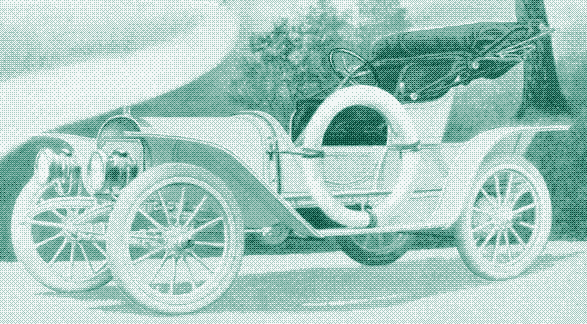
Many early electric cars had a range comparable to that of today’s EV’s. Below is an overview of early electrics and their specifications, put together from sales catalogs and books.
1907 Catalog (various manufacturers)
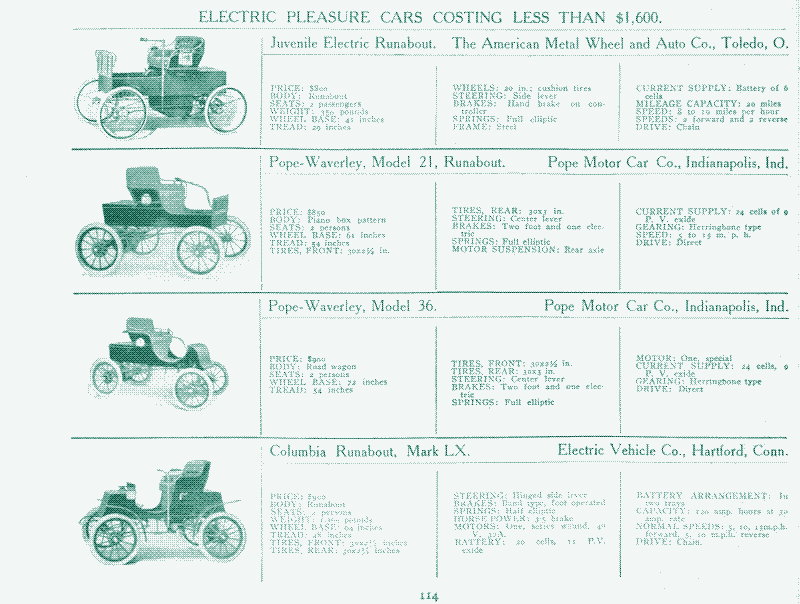
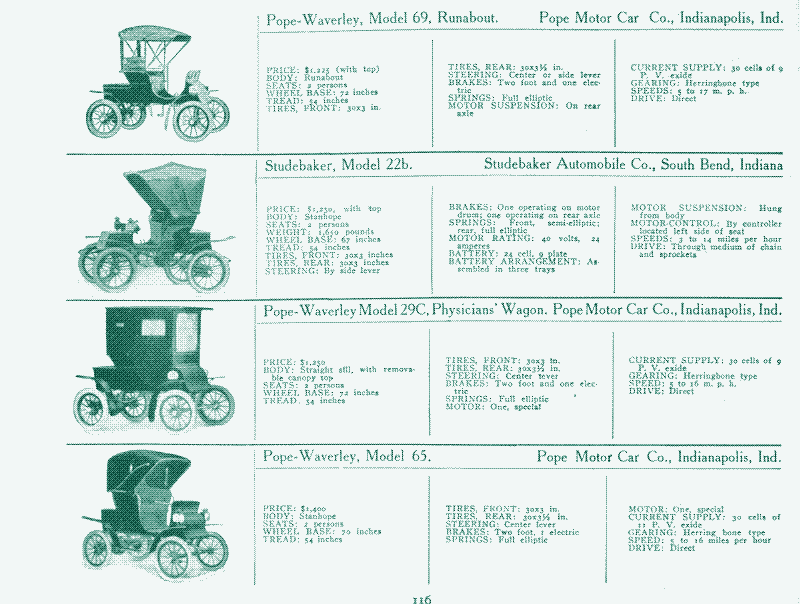
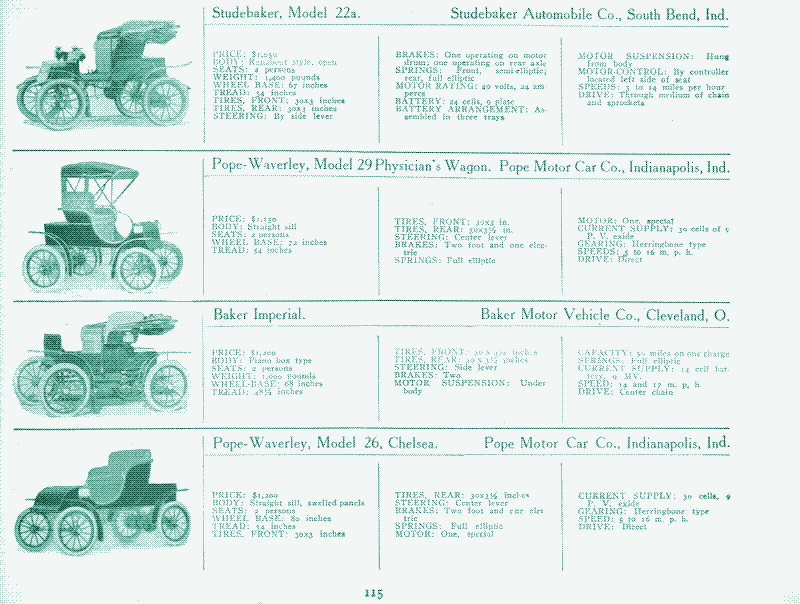
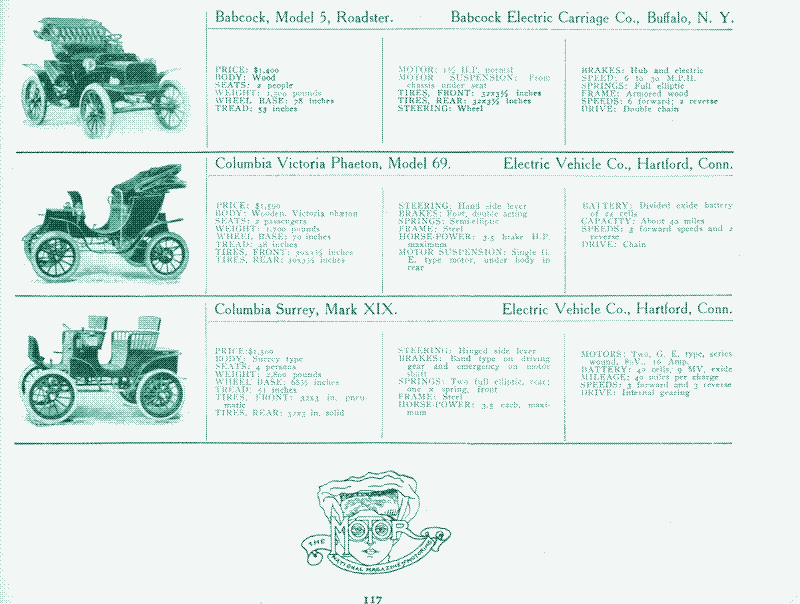
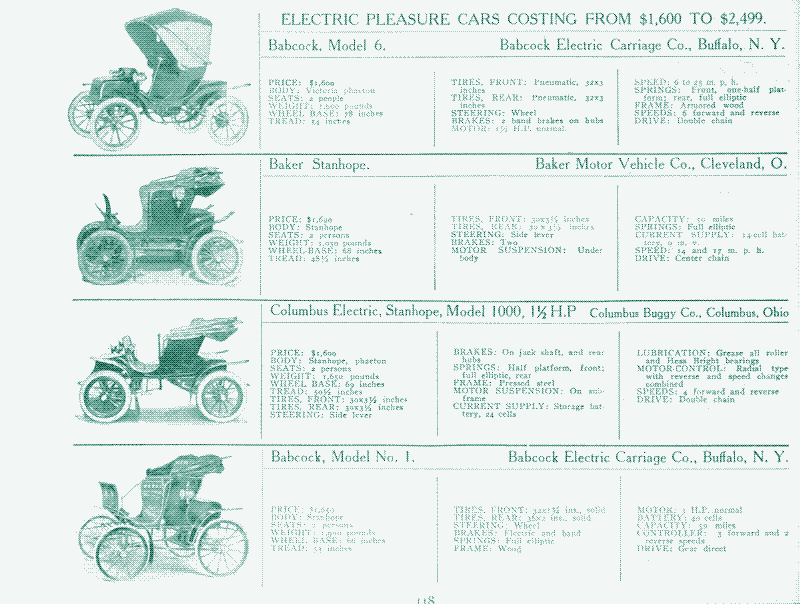
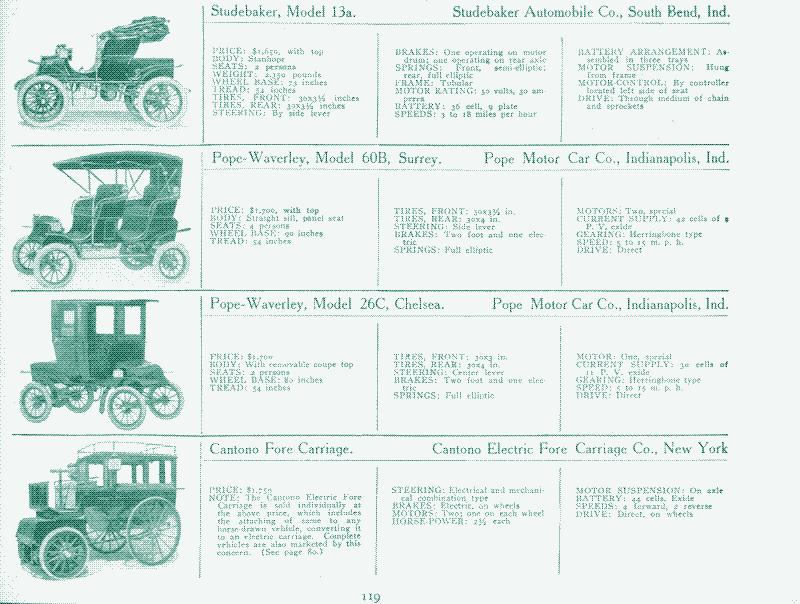
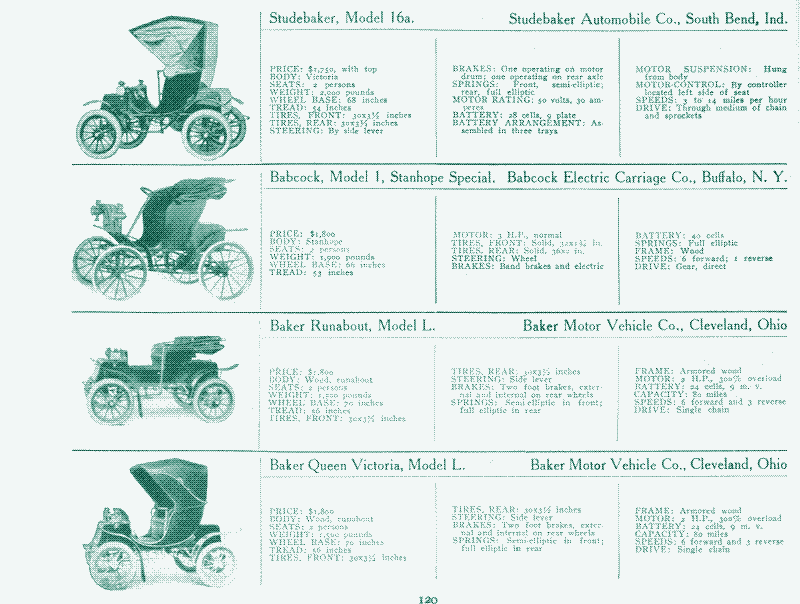
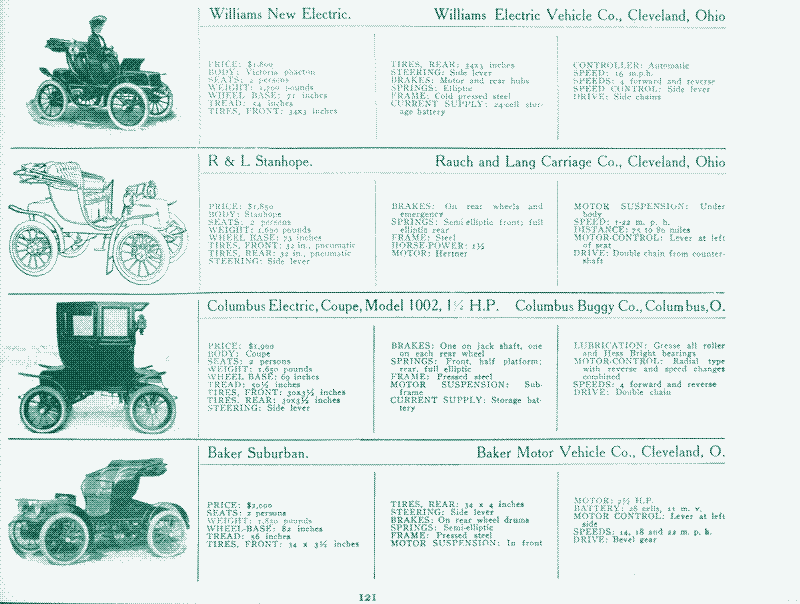
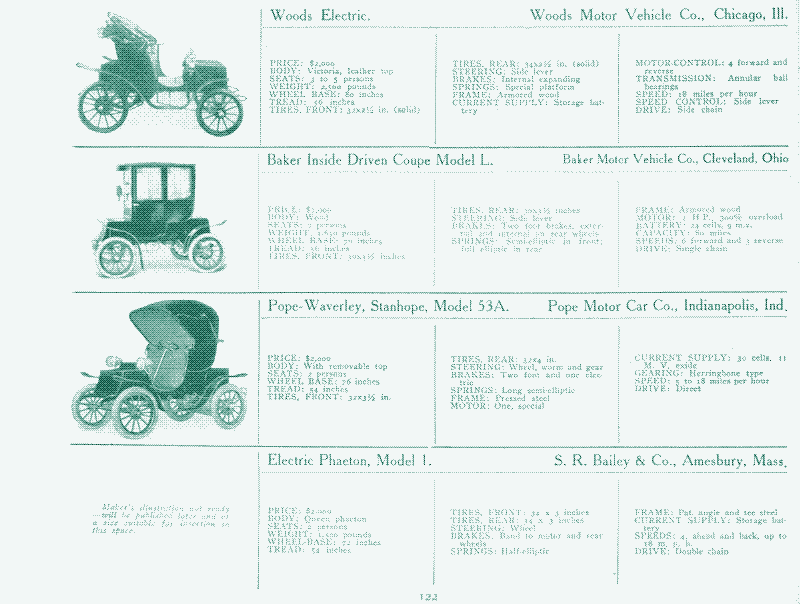
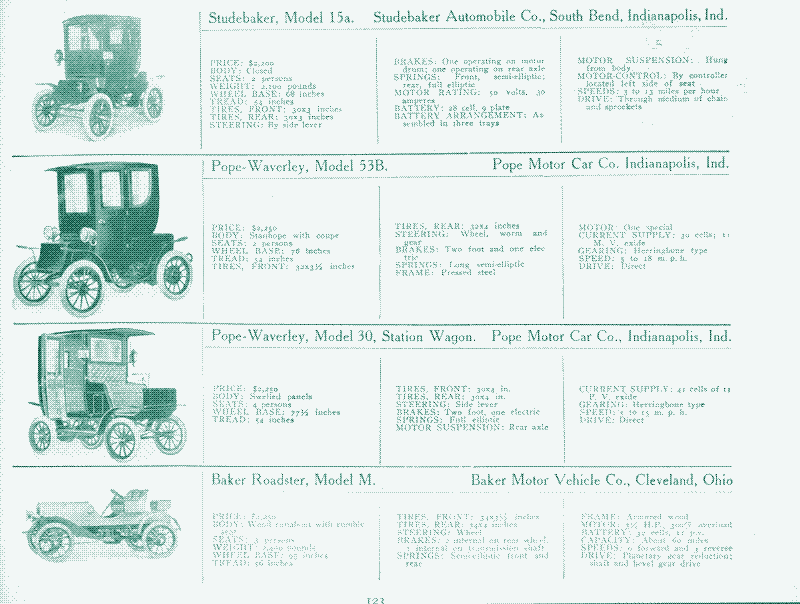
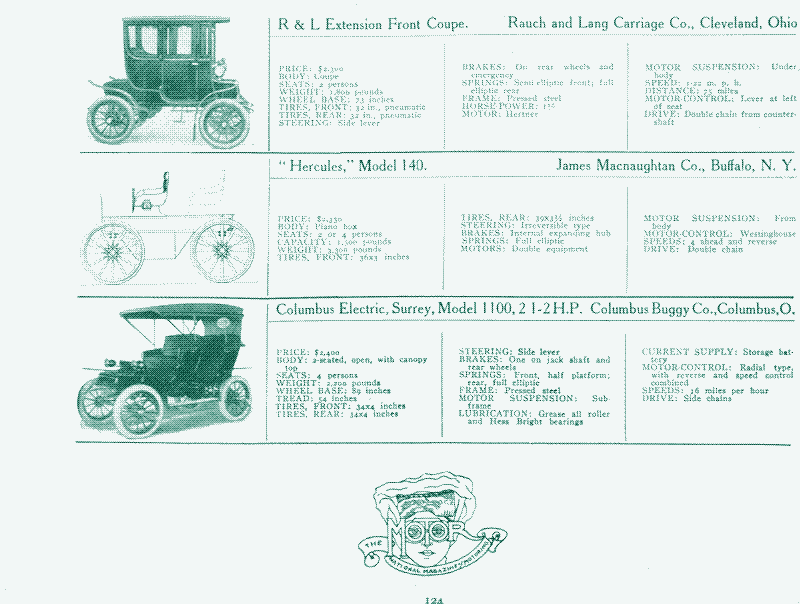
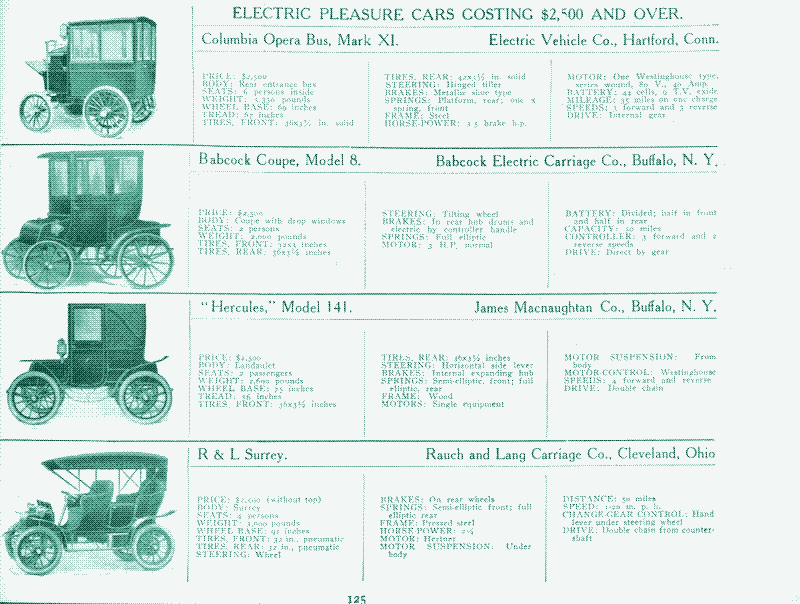
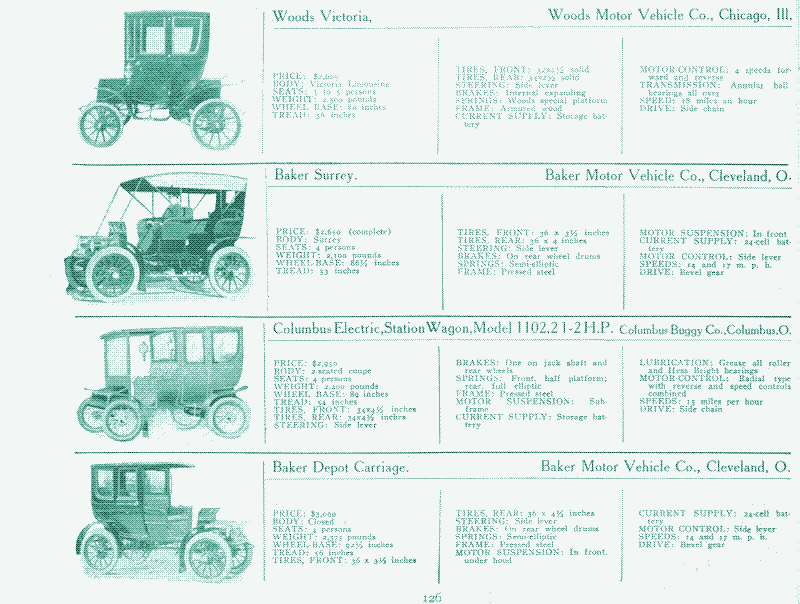
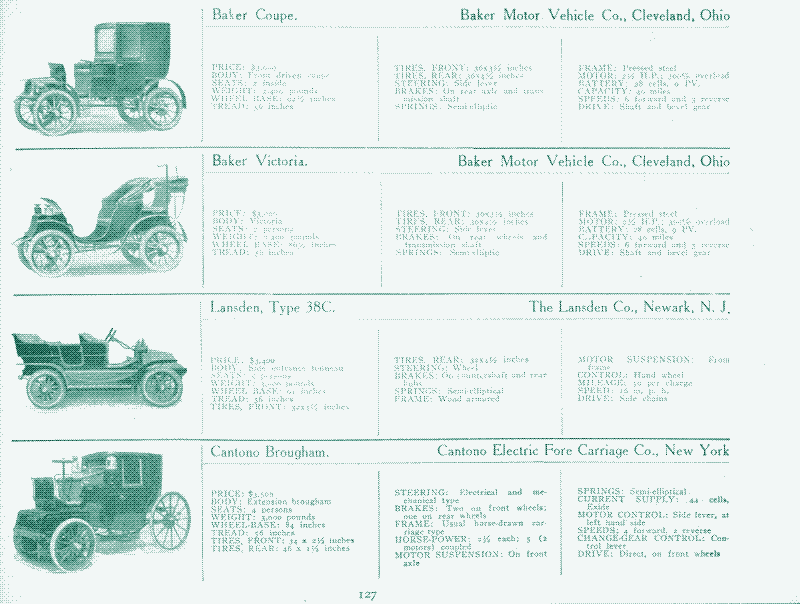
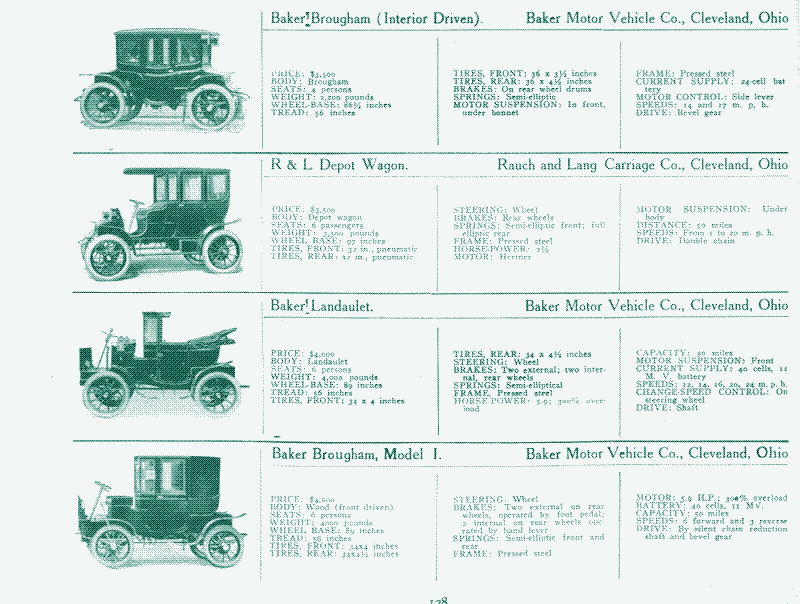
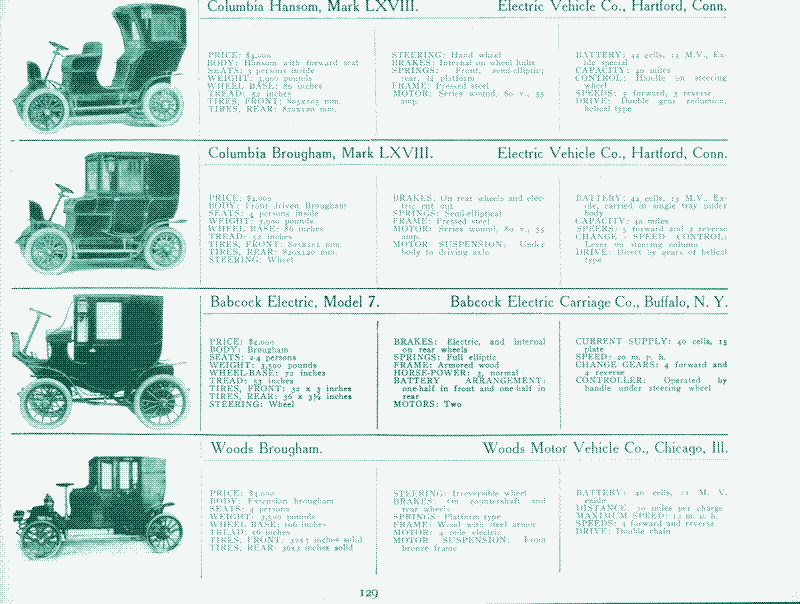
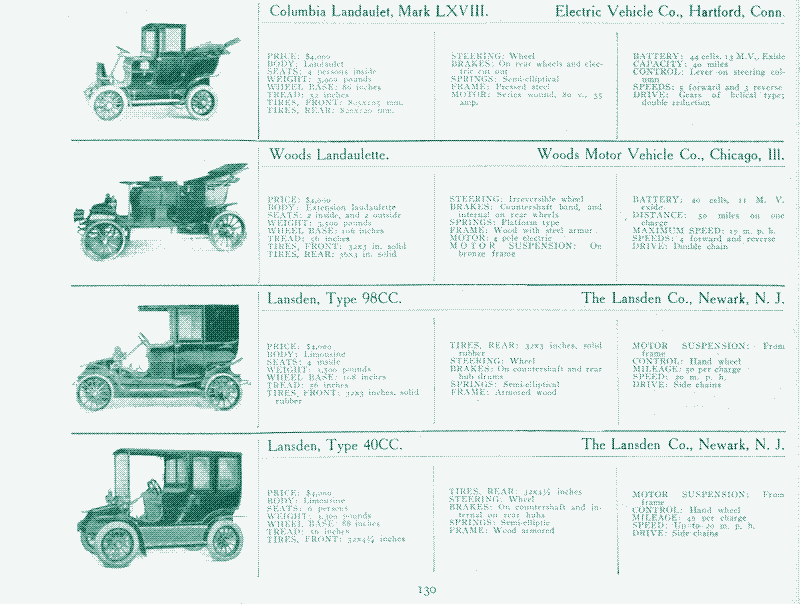
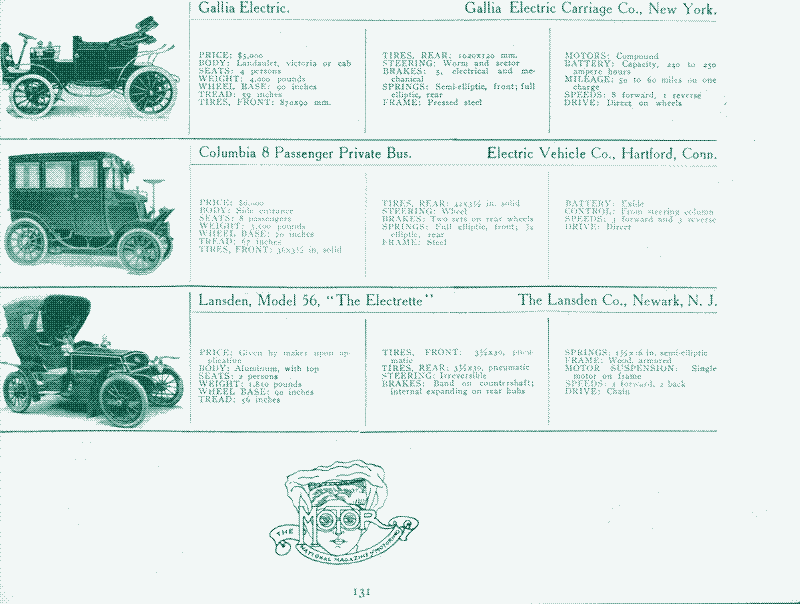
Source: “An illustrated directory of the specifications of all domestic and foreign motor-cars and motor business wagons gasoline, steam, and electric sold in this country”, New York, 1907. See also the overview of early electric trucks from the same catalog.
Car models were indicated differently at the beginning of the twentieth century, mostly consisting of the brand name, a model number and the car body type. Most body styles were derived from those available in horse-drawn carriages (overview here).
Columbia Electric Vehicles
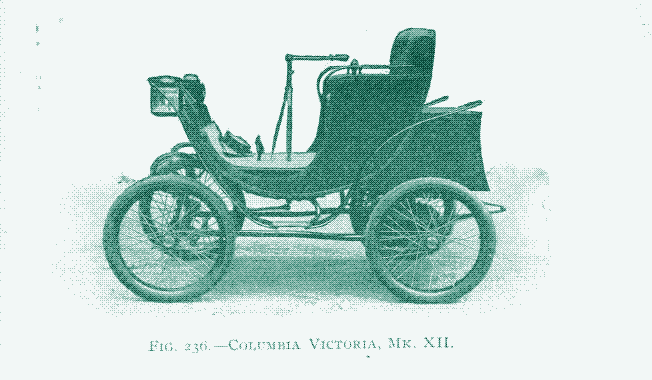
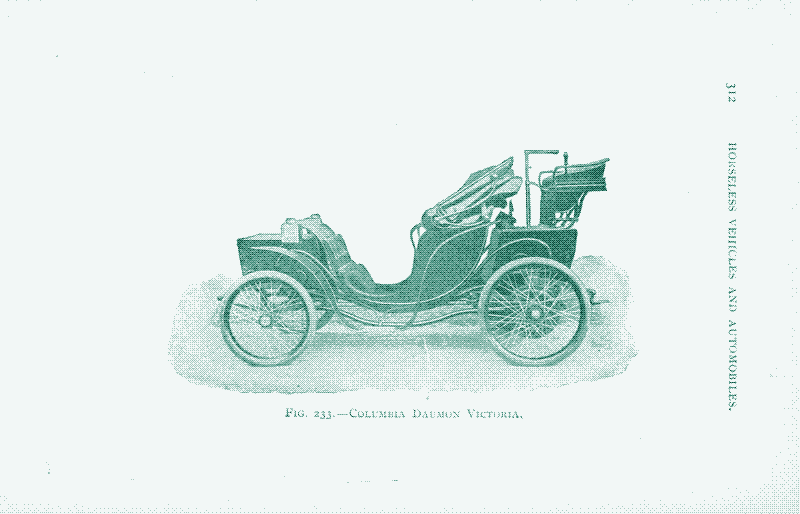
The Mark III (picture) has come to be generally recognized as almost a standard type of American electric vehicle. It has a single 25-ampère motor. Max speed = 12 mph. The battery, consisting of 44 chloride cells, has a capacity of 75 ampère-hours at a 3-hour rate, giving a mileage of 35 miles over ordinary roads. The total weight of the finished vehicle is 2,570 pounds.
Another well-known style of pleasure carriage is the dos-a-dos, designated as Mark VI (picture). A single 30-ampère motor is employed. Battery consists of 44 cells, and when discharged in 3 hours will furnish 90 ampère-hours, for a mileage of 35 miles. Maximum speed = 11 mph.
In the Mark VI, Dauman Victoria (picture), a somewhat radical departure from the lines usually followed in motor vehicle building has been made. Weight = 3,250 pounds. Range = 30 miles, max speed = 11.5 miles.
The Mark XI, Brougham-de-luxe (picture), intended for personal use, is rear-driven by a single 40 ampère motor. battery of 44 cells. Mileage of 28 miles, speed 12 mph.
The two other popular styles of vehicles are the small Victoria and runabout, termed Mark XII (pictures). Their mileage = about 30 miles. The motor is rated at 20 ampères, battery of 44 cells, furnishing about 45 ampere-hours, max speed 14 mph, weight about 1900 pounds.
All vehicles of this company are equipped with combination volt and ampere-meters.
Automobiles of the American Electric Vehicle Company
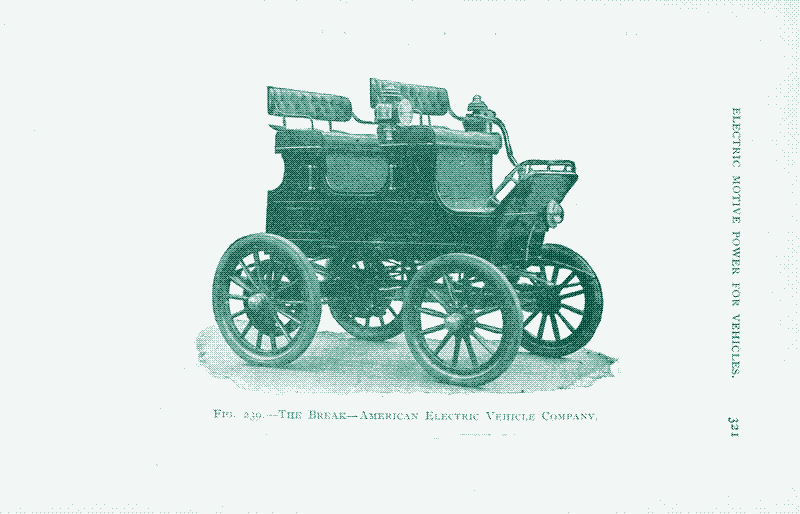
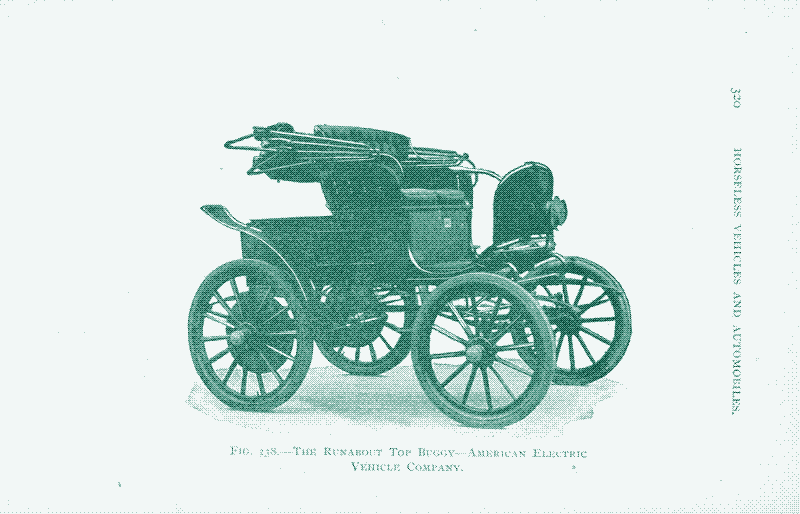
- Runabout top buggy for 2 persons: 2.5 HP
- Break for 4 persons: 4 HP,
- Dos-a-dos for 4 persons: 4 HP,
- Mail Phaeton for 4 persons: 4 HP
- Top Surrey for 4 persons has 4 HP
- Six-passenger break: 5 HP.
- One charging will run a vehicle 35 to 50 miles. The batteries can be recharged in the carriage, and in about 3 hours time, shutting off automatically when filled. They consist of 42 accumulators. Maximum speeds vary from 12 to 15 mph. (pictures).
The Waverly Electric Motor Vehicles by the Indiana Bicycle Company, Indianapolis
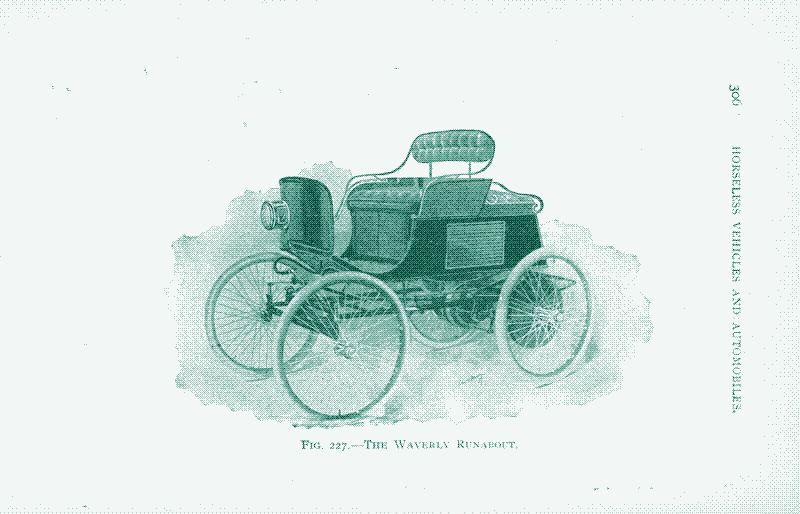
Image: The Waverly Runabout. Source, 1901.
Three sizes of motors are used according to the weights of the vehicles: 1.5 HP for the runabout, 2.5 for the Phaeton and Stanhope, and 3.5 HP for the delivery wagon. The battery consists of 44 cells varying in capacity from 60 to 125 ampères; the lightest weighing about 9 pounds per cell. Maximum speed = 14 mph. The runabout (source + picture) is intended for two persons, but has an emergency seat for two more. It weighs about 1,200 pounds and has a radius of 35 miles.
The Stanhope of phaeton (source + picture) is a most convenient carriage for touring or a physician. It has a radius of 40 miles and a top speed of 14 mph. This company also makes a brougham, equipped with a 3.5 HP motor and a 44 cell battery. Removable rear-seat, and for winter-use it is provided with an electric heater. The Waverly merchandise delivery wagon is a heavier and more powerful vehicle than usual, with a 3.5 HP motor and a radius of 40 miles. Max speed is 12 mph. (source + picture).
100-mile Electric Roadsters
Early EV manufacturers and battery makers could not agree on how to position the electric vehicle in the market. Some were convinced that the electric should be marketed as a short distance city vehicle. They saw it as a mistake to try and sell the electric as a touring vehicle, because its range would always be inferior to that of a gasoline powered car.
“Electrical World” wrote in 1909: “The average EV, as built today, has considerably more available mileage on one charge of battery than the average vehicle of ten years ago, and what is more, has a considerably greater mileage than is actually needed in the run of business or pleasure, except where a long tour is undertaken.”
“I do not believe the average daily mileage of most cars is above, say, 30 miles”, said the German-American engineer Charles Proteus Steinmetz to the New York Times in 1915. Steinmetz had developed a more efficient motor - incoporated in the 1917 Dey Electric Roadster - but he did not turn that advantage into a longer range. Instead, he choose to develop a lighter and cheaper vehicle (1400 pounds or 636 kg): “The series motor consumes about 20 percent more power than the controlled motor. With the same mileage, this means a savings of 20 percent of the battery weights, and as the battery is a considerable part of the car weight, a further saving of power due to lesser weight which has to be carried”. (Sources: 1 / 2 / 3).
